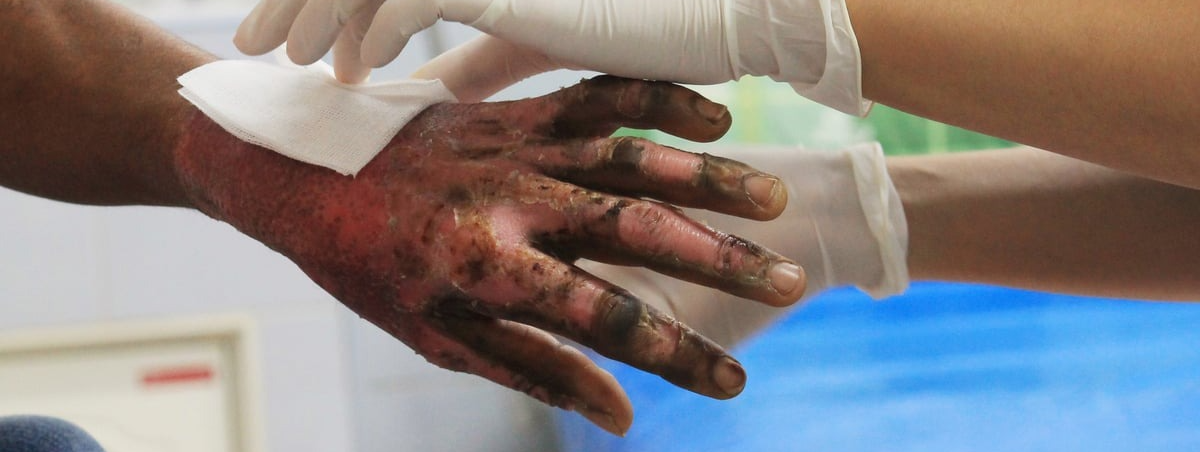Female Genital Rejuvenation
As women go through the milestones of childbearing, delivery and menopause, changes can happen to the external and internal genitalia as they occur in the rest of the body as well. Often these changes not only affect the appearance of the genitalia, but also affect function and quality of life. Unfortunately, many women accept symptoms such as stress urinary incontinence, vaginal laxity, vaginal dryness and discomfort from labial hypertrophy as par for course in the process of ageing.
Female genital rejuvenation aims to improve the function, appearance and sensation in the genital area, restoring one’s comfort and confidence in their daily activities.
Type of Female Genital Rejuvenation Procedures
It generally includes surgical and non-surgical options:
Surgical Procedures:
- Labiaplasty
- Labia minora
- Labia majora
- Clitoral hood lift
- Vaginoplasty
- Including perineoplasty
Non-surgical Procedures:
Radiofrequency Microneedling is an energy-based device which can address concerns in both the internal and external genitalia to achieve the vaginal rejuvenation, including:
- Tightening of vaginal tissues
- Improved lubrication and dryness
- Reduction in urinary incontinence
- Labial tightening
Labiaplasty vs Vaginoplasty: Which One Matches Your Concern?
Labiaplasty procedures aim to improve the function and appearance of the external genitalia including the labia majora (outer lips of the vulva), labia minora (inner lips) and clitoral hood. A vaginoplasty is a surgical procedure which improves the internal genitalia or the vagina to improve tightness and address functional symptoms such as urinary incontinence. Some women, especially those with milder symptoms, may also be good candidates for non-surgical vaginal rejuvenation with energy-based devices such as the Radiofrequency (RF) Microneedling device. This may be used to treat both the internal and external genitalia.
Procedures may be done in combination or in a staged manner. It is important to speak to your plastic surgeon to determine what is the most ideal and safe option to suit your needs.
Labiaplasty - Restoring Comfort and Confidence
Who might benefit from a Labiaplasty
Labiaplasty is a surgical procedure aimed at reducing or reshaping the labia or the lips of the vulva. Understanding who might benefit from this procedure involves considering both physical and psychological factors.
Physical discomfort and medical reasons:
Individuals experiencing discomfort or pain due to their labia can benefit from labiaplasty. Conditions such as labial hypertrophy where the labial are abnormally large or asymmetrical can cause chaffing, irritation or pain during physical activities like cycling, running or sexual intercourse. In some cases, enlarged labia may interfere with genital hygiene, leading to recurrent infections and discomfort. For these individuals, labiaplasty can alleviate physical symptoms and improve quality of life.
Psychological and emotional well-being
Beyond physical issues, some women seek labiaplsty to improve their self esteem and body image. Feelings of embarrassment or self-consciousness about the appearance of their genital area can impact personal relationships and overall mental health. For these women, the procedure can foster greater confidence and improve sexual satisfaction.
What are the types of labiaplasty procedures
Labia minora reduction
This procedure focusses on reshaping or reducing the size of the labia minora or inner lips of the vulva, removing excess tissue including the areas of darkened skin at the edges of the labia if desired. Depending on the size and shape of the labia, surgical methods such as the trim (or edge) technique, or the wedge resection technique can be used to address various concerns in the labia. The aim of the procedure is to create natural appearing labia with minimal scarring after surgery. Patients with mild excess of labia minora may be candidates for non-invasive reduction or tightening using a radiofrequency microneedling device.
Labia majora rejuvenation
Surgery on the labia majora or outer lips of the vulva can be performed to restore volume, correct sagging or improve symmetry. Treatment methods involve correcting skin laxity as well as improving the volume of the labia. Skin laxity can be addressed by surgical removal of excess skin through well placed incisions or non-invasive skin tightening using radiofrequency microneedling energy devices. Fat grafting which transfers a small amount of the individual’s own fat from areas of stubborn fat accumulation to the labia can improve the volume in those with sagging or deflation of the labia majora.
Clitoral hood lift
Often an ancillary procedure to achieve harmony with the rest of the labia minora during a labiaplasty, this procedure removes the excess tissue around the clitoral hood. Utmost care is taken by way of anatomical knowledge and precise surgical technique to ensure that clitoral sensation is preserved. It is important to note that this procedure is not designed to expose the clitoris for the purposes of enhanced sexual sensation, as this can result in negative consequences such as pain in the long run.
Recovery and aftercare
The vulva is a delicate region which may be prone to swelling after surgery. Simple care and cleaning of the area in the recovery period will be taught prior to surgery to ensure a smooth post-operative recovery. In general, swelling and tenderness gradually improves over the first 2 weeks. Full healing may take about 4 weeks and activities including sexual intercouse may have to be restricted during this time. Final results are usually visible 3 months from surgery after swelling fully resolves and tissues soften.
Vaginoplasty and Perineal Repair
Who might benefit from this?
Many women experience decreased vaginal tone, discomfort and sexual dissatisfaction in the course of childbirth and ageing. In more advanced cases, laxity may result in prolapse of the surrounding organs into the vagina and result in functional issues such as difficulty with bladder and bowel control. During the course of a natural delivery, some women may experience tears or scarring due to the episiotomy, resulting in gaping of the perineum. A vaginoplasty with a perineal repair may be performed to address these functional issues, or to improve the appearance of the tissues around the vaginal opening.
Radiofrequency Vaginal Rejuvenation
Radiofrequency (RF) vaginal rejuvenation is a non-surgical functional and cosmetic treatment that uses controlled radiofrequency energy to stimulate collagen and elastin production in the vaginal tissues. The RF energy delivered into the deeper vaginal tissues stimulates collagen remodeling, elastin production, and increased blood flow. This results in an increased tone and elasticity of the vaginal tissues, as well as a rejuvenation of the vaginal lining, resulting in vaginal tightening, improved lubrication, reduced urinary incontinence, as well as an improved appearance of the external genital tissues.
Benefits in a nutshell:
- Vaginal tightening
- Improved lubrication
- Improvement in urinary incontinence
The procedure can be done without anaesthesia, and downtime is minimal. Effective treatment usually requires 3-4 sessions spaced a few weeks apart with yearly maintenance sessions yearly thereafter.
If you have some of these concerns, you may be a candidate for a female genital rejuvenation procedure:
- Labial laxity, redundant labial skin
- Displeasure or lack of confidence in vulva/vaginal appearance
- Vaginal laxity
- Vaginal dryness
- Stress urinary incontinence
- Urge incontinence or leaking
Why Choose Polaris Plastic and Reconstructive Surgery
At Polaris Plastic and Reconstructive Surgery, your health, safety and privacy is of priority. Dr. Pek Wan Sze is an MOH-accredited, female plastic surgeon who is a member of the European Society of Aesthetic Gynecology. She adopts a personalised approach to each patient to ensure that treatment is targeted to your needs and ensures that realistic expectations are discussed such that you are confident in deciding to move forward.
To find out more about female genital rejuvenation, reach out to book an appointment with us.
2. Chang, D. W., Suami, H. & Skoracki, R. A Prospective Analysis of 100 Consecutive Lymphovenous Bypass Cases for Treatment of Extremity Lymphedema. Plastic and Reconstructive Surgery 132, 1305–1314 (2013).
3. Garza, R., Ooi, A., Falk, J., Chang, D. (2019). The Relationship Between Clinical and Indocyanine Green Staging in Lymphedema Lymphatic Research and Biology 17(3), 329-333.
4. Nguyen, A., Chang, E., Chang, D. (2013). Simultaneous Vascularized Lymph Node Transfer with Microvascular Breast Reconstruction Plastic and Reconstructive Surgery 132(), 22.
PATIENT STORIES
Post Massive Weight Loss Body Contouring
A 40-year-old lady consulted with Dr Pek with the desire to correct large amounts of excess skin and soft tissue. She had undergone Bariatric Surgery (Sleeve Gastrectomy) 2 years prior to her presentation and had successfully lost almost 30kg of weight. With ... Read more
Treat Gynecomastia with Minimally Invasive Methods in Singapore
A 38-year-old male engineer presented to Dr Pek with symptomatic growth of his chest/breast area. Since puberty, he complained of unusually prominent chest tissue around his nipple and areolar region. This had worsened gradually over the years, with the left ... Read more
Upper eyelid lift and eyebags rejuvenation
63 years old Chinese female with hypertension and hyperlipidemia presented to Dr Pek with significant droopiness of her upper eyelids on both sides, affecting the upper portion of her visual field. She would constantly feel that her upper eyelids were heavy, ... Read more
Bilateral breast reconstruction using abdominal free flaps
A 45-year-old mother of 2 children was diagnosed with left breast cancer, for which a skin-sparing mastectomy (total removal of breast tissue leaving behind the skin envelope) was recommended. Read more
ARTICLES
TL;DR: A tummy tuck (abdominoplasty) goes beyond aesthetics ...
TL;DR: Lymphedema is long-term swelling caused by poor ...
Contact Form
1 Orchard Boulevard #10-08 Camden Medical Centre, Singapore 248649
6 Napier Rd, #08-01 Gleneagles Medical Center, Singapore 258499
Tel: +65 6737 4565 | Mobile: +65 8828 4565 | Email: clinic@polarisplasticsurgery.com | Business Hours: Mon - Fri: 9am - 6pm | Sat: 9am - 1pm | Sun/Ph: Closed













